- An ode to the forest
- Welcome to Chai Time at Aramness
- Food That Nourishes
- Experience the Aramness Way
- Take A Walk On The Wild Side
- That Wonderful Time of the Year
- A Truly Iconic Safari Experience
- Diversity of life in the Gir ecosystem
- The Winter Season Safari Premiere
- From A Naturalist's Lens
- Embracing Stillness in Gir
- The Feathered Friends of Gir
- Our Closest Connection to Wilderness
- The Cuddly Side of Lions
- What Deer & Parakeets Reveal About Gir’s Wild Heart
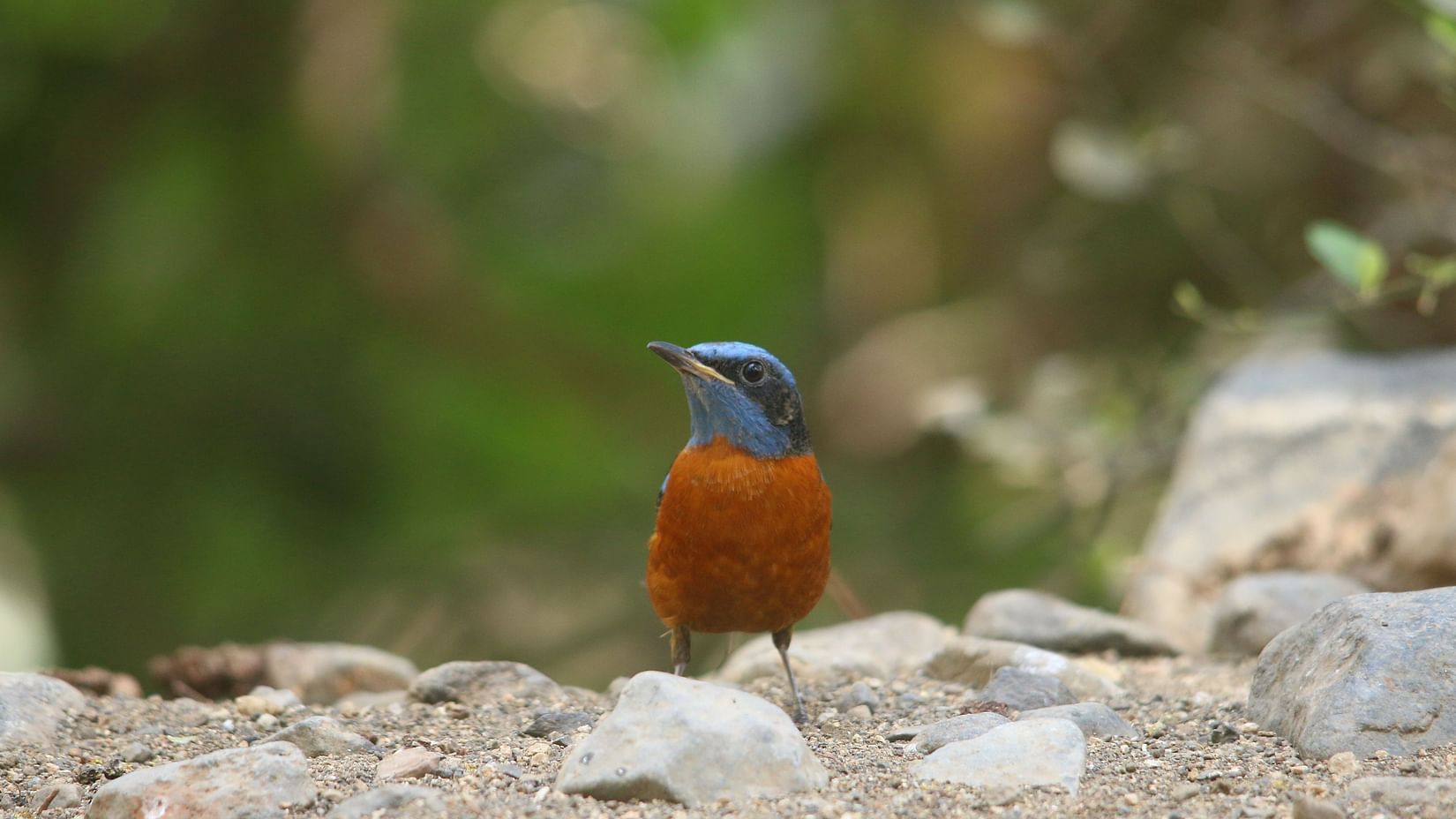
As the Gir National Park opens up for the first time post-monsoon, our naturalist Naman takes us through the winter season premiere of the Gir forest and all that it entails.
After 4 months of monsoon, Gir Jungle opened on 16th of October for safaris, and to double our excitement, park timing to enter for early morning safaris had been changed from 6:45 am to 6:30 am. The 15 minutes early in the winter season is a boon, especially for nocturnal wildlife. This meant increased chances to see rather very rare Rusty Spotted Cat, Stripped Hyena and an Indian Porcupine along with nocturnal birds like Indian Scops Owls, Jungle Nightjars and many more still active and getting ready to settle down for roosting in rest of the day.
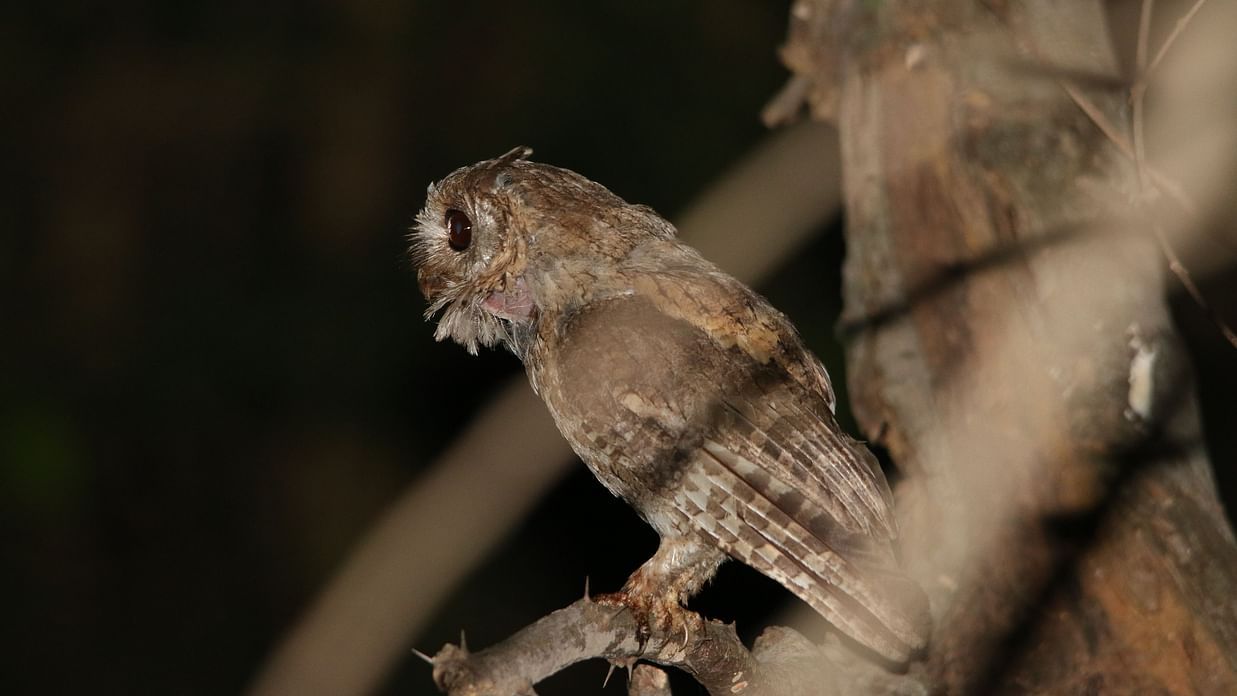
Indian Scops Owl Calling at Dawn
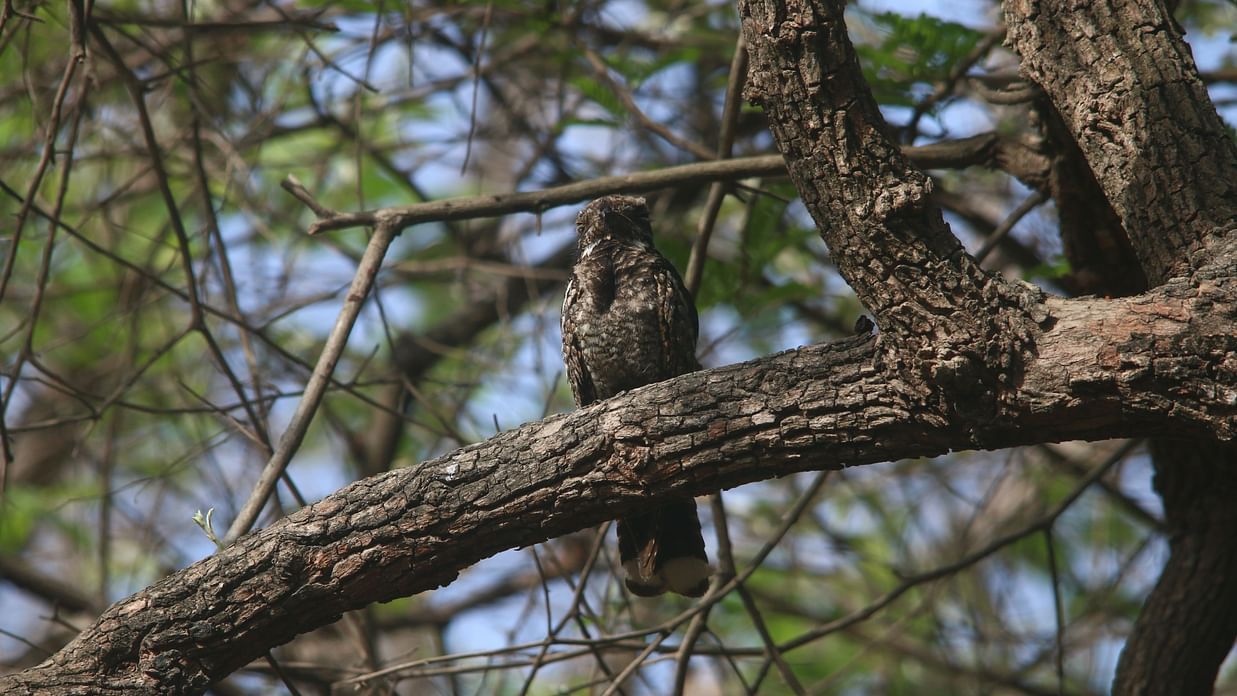
Jungle Nightjar settling to roost
In terms of big cats, this season looks exciting. There’s one pride at Gandhariya, a lioness which had given birth to cubs in around June 22, before the park closed. All cubs have survived monsoon and now are seen more often nearby to safari tracks, sometimes with their father as well. The Gadakbari pride is still larger than ever, most cubs have become sub-adults and are often seen venturing on their own. But one of the most astonishing factors which we feel would make big cat sighting extremely well from this season onwards is limited growth of cassia tora and cassia uniflora. These cassia species are invasive weeds, one of the worst threats to the forests of Gir. Understanding this problem, the Widlife Division Sasan Gir and Gujarat Forest Department have taken great efforts for the removal of these invasive weeds since past few years. And this year, the results are clearly visible. We could see native grasses and other flora blooming which were initially dominated by invasive weeds. The decrease of cassia has also made forests much more visible from safari tracks and comparatively it will become easier to track/spot leopards as well.
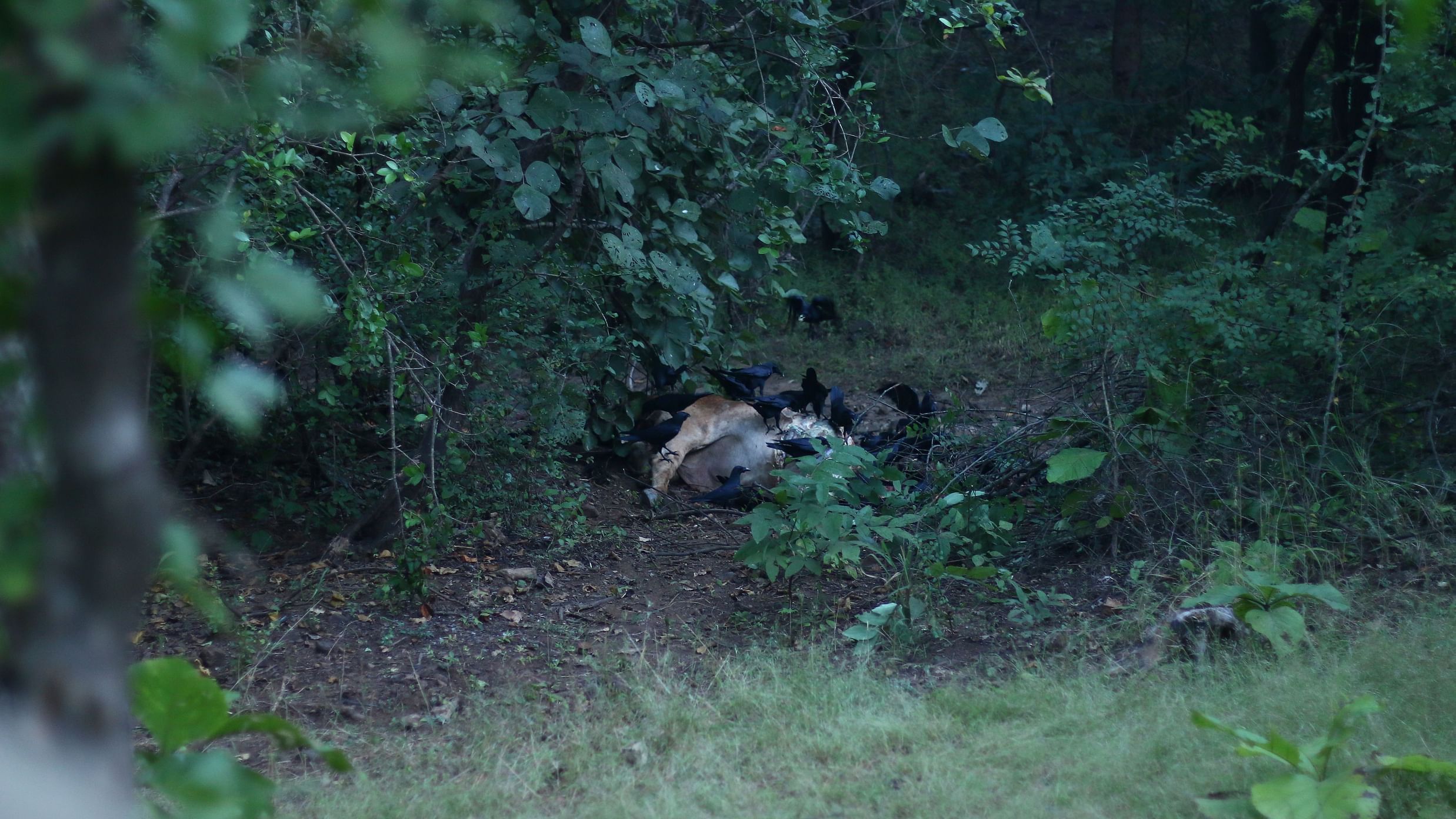
Old kill easy to spot in absence of weeds
By the time October starts in Gir, safari in winter exposes tourists to migratory birds. One such migratory bird is the Greater Spotted Eagle. We saw this eagle on 19th October morning at Kamleshwar Coseway, perched on top of a tree. I vividly remember, last winter, every time we crossed this coseway, we would see a Greater Spotted Eagle on the exact same perch. This helps us understand how strong site fidelity these raptors have, and them returning to the exact same spot every year suggests the habitat is intact and still suitable. It is known that these eagles are winter migratory in Gir, but from where they were coming and which migration flyway they were using was still very vague. To understand this better, the Wildlife Division Sasan Gir, took an initiative in collaboration with other organizations by GPS tagging of four raptor species.
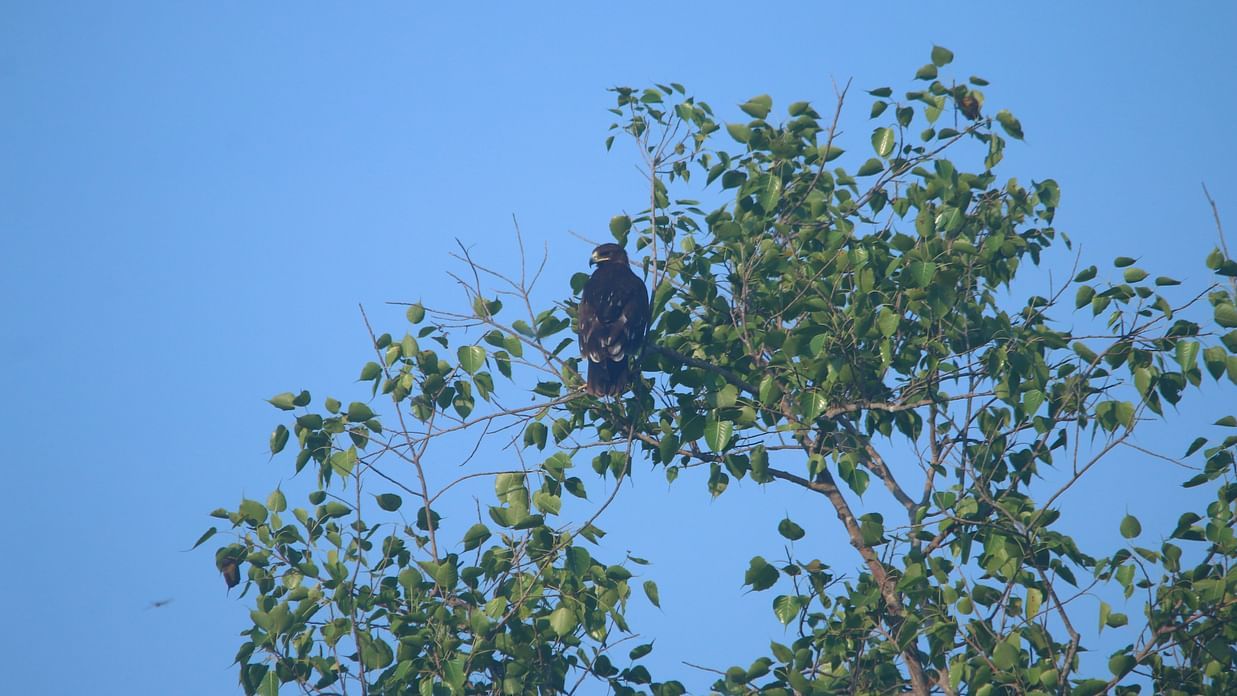
Greater Spotted Eagle
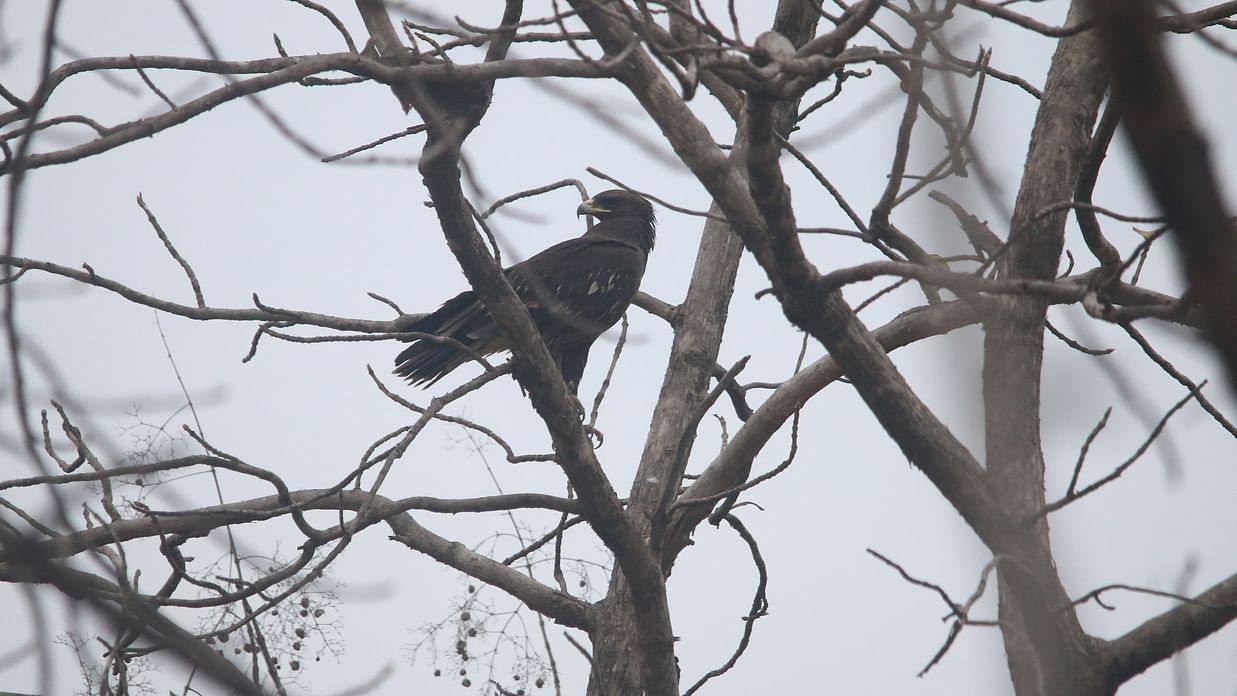
Greater Spotted Eagle
As far as Greater Spotted Eagles are concerned, it turns out they come all the way from Kyrgyzstan, Tajikistan and Afghanistan. Thanks to highly commendable efforts of Wildlife Division Sasan Gir and State Forest Department who undertook first of its kind of study in country for these threatened species and publishing the data for all of us to understand better the right approach to conservation.

Migration Flyway
Before the park reopened, we made a recce visit to Girnar WLS, about 60 kms from Aramness Gir, a hidden and unexplored terrain. Girnar is the highest mountain in the state, and Gir is an extension of the Girnar Mountain Range. Popular for its temples, historical monuments and spiritual deities, the wildlife diversity of Girnar WLS is not known to many. It is also one of the hotspots in state with enriched diversity of flora with medicinal values.
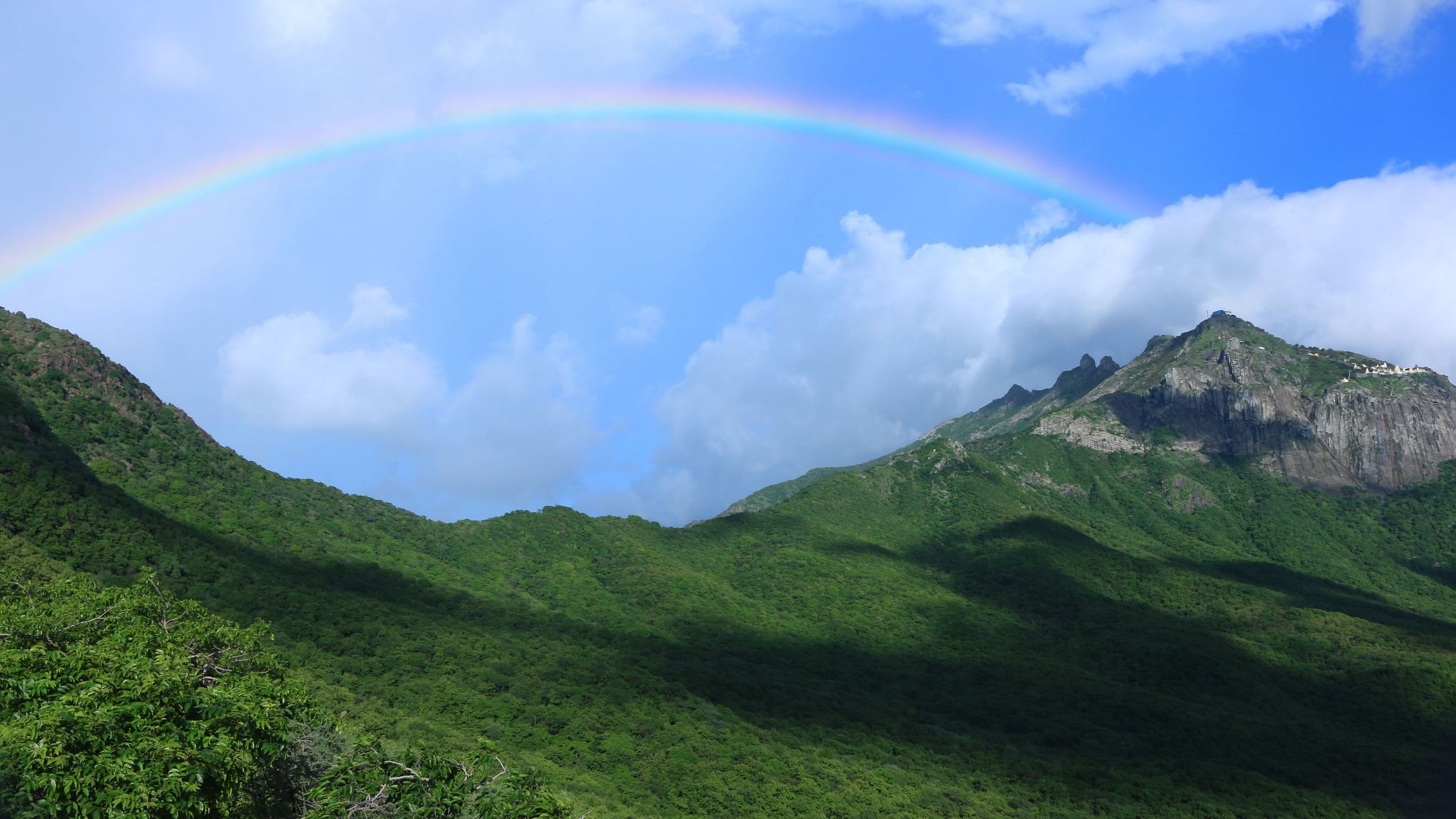
The Girnar Mountain
In the morning, we experienced ropeway, which took us from foothills to 5,000 stairs at the Ambaji temple. En route, one can witness Long Billed Vultures, Griffon Vultures and occasionally a Red-Headed Vulture soaring. Cliffs on the Girnar Mountain are one of the largest nesting colonies of Indian Vultures in Gujarat, and being in ropeway provides an opportunity to see them soaring closely. These are the same vultures that often migrate to Gir and Devaliya in search of carcasses. Once on top, we also witnessed a Shaheen Falcon mobbing an Indian Vulture. Below are the few pictures from archives, photographed on the Girnar mountain.
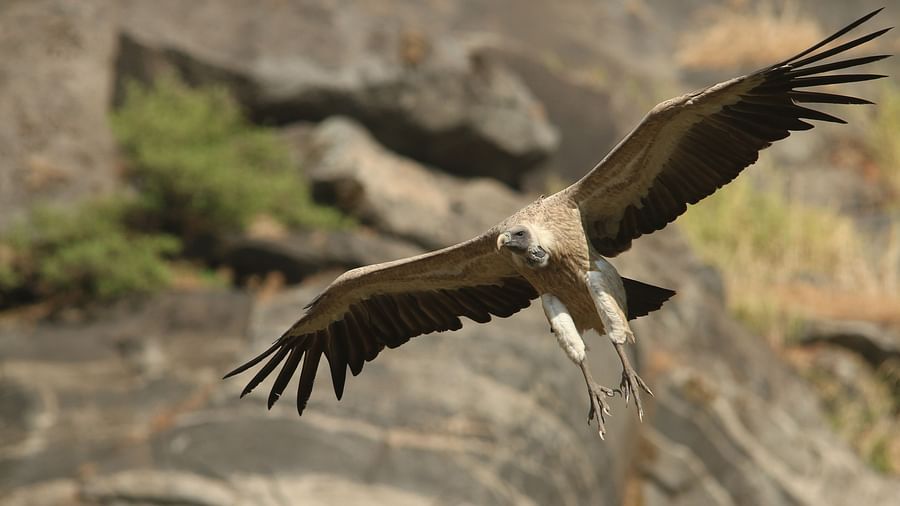
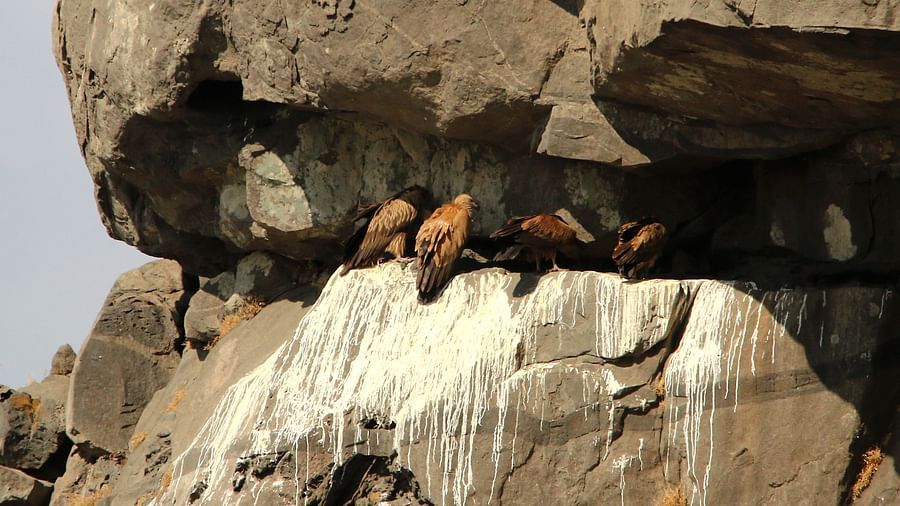
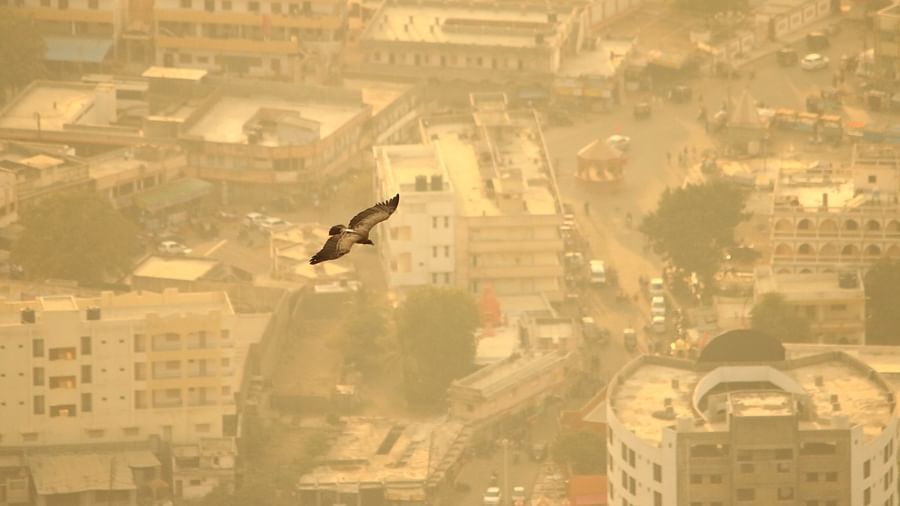
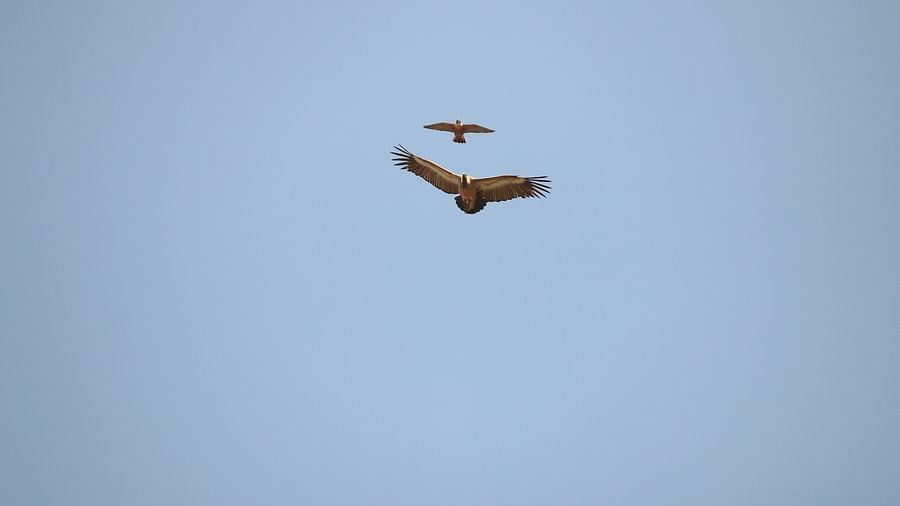

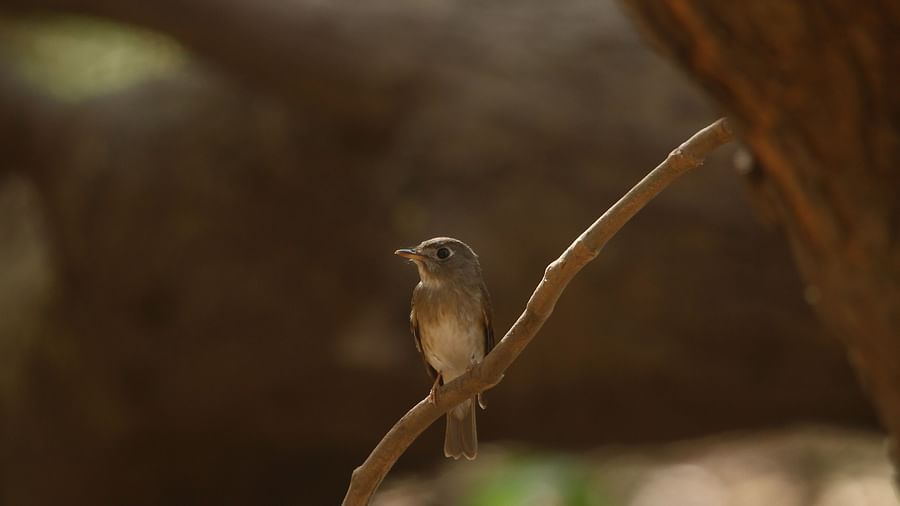
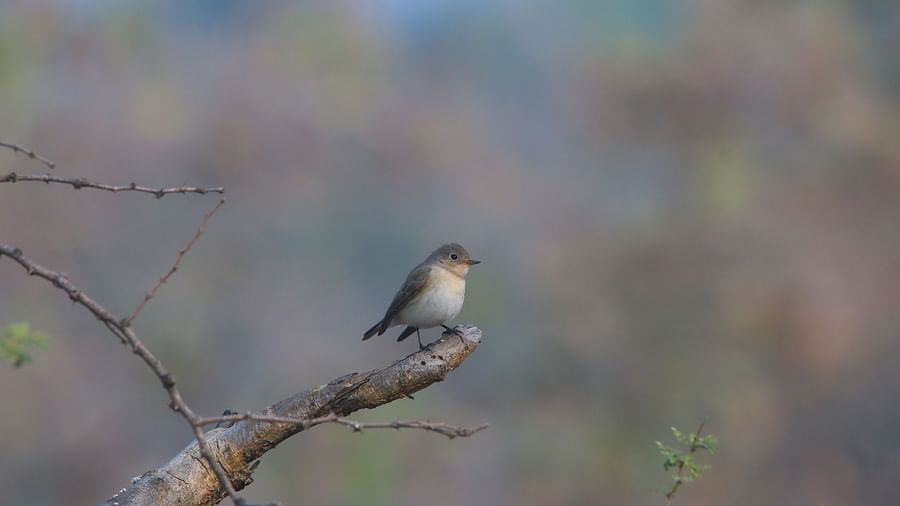
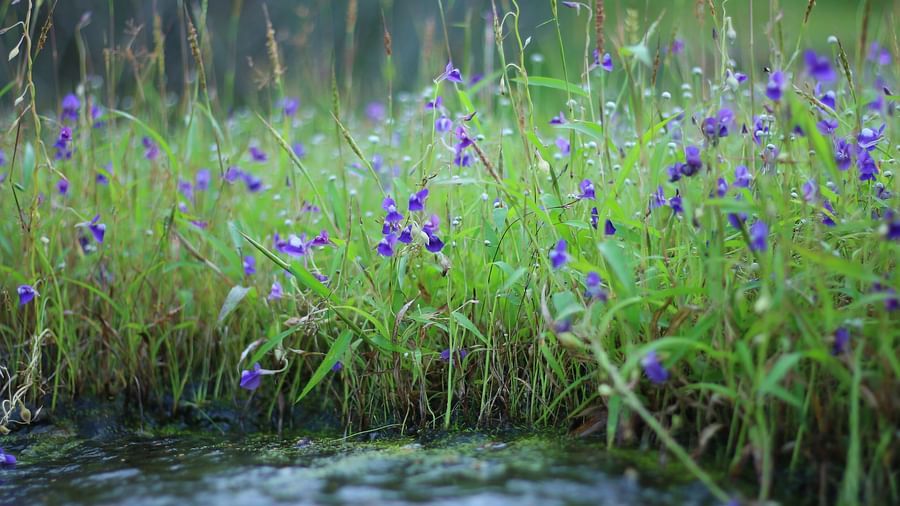
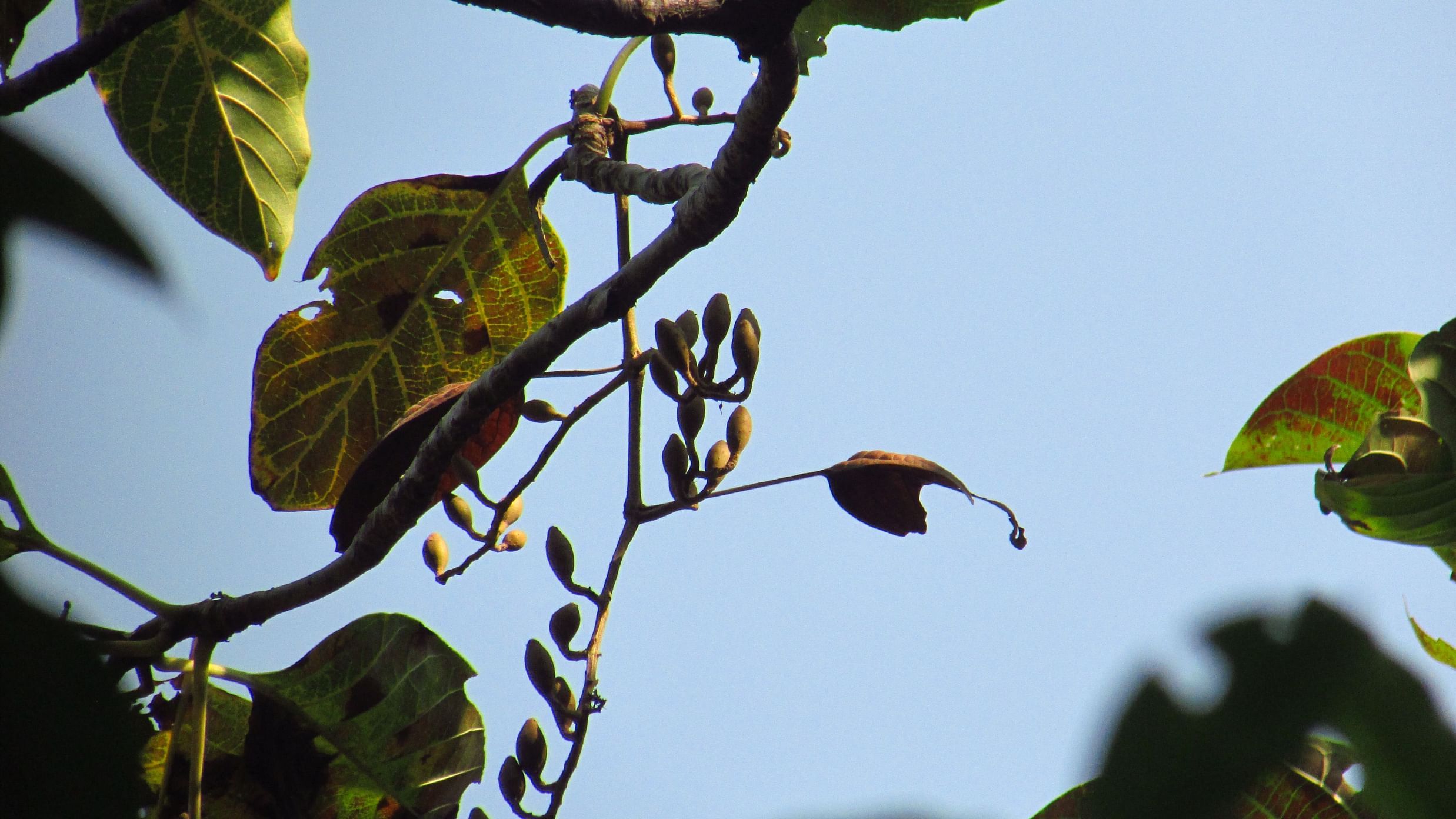
Bridal Couch Tree
A rare tree, which develops its saplings from seeds while hanging on the branch, and once the entire sapling falls on the ground, a tree would grow if conditions are favorable.
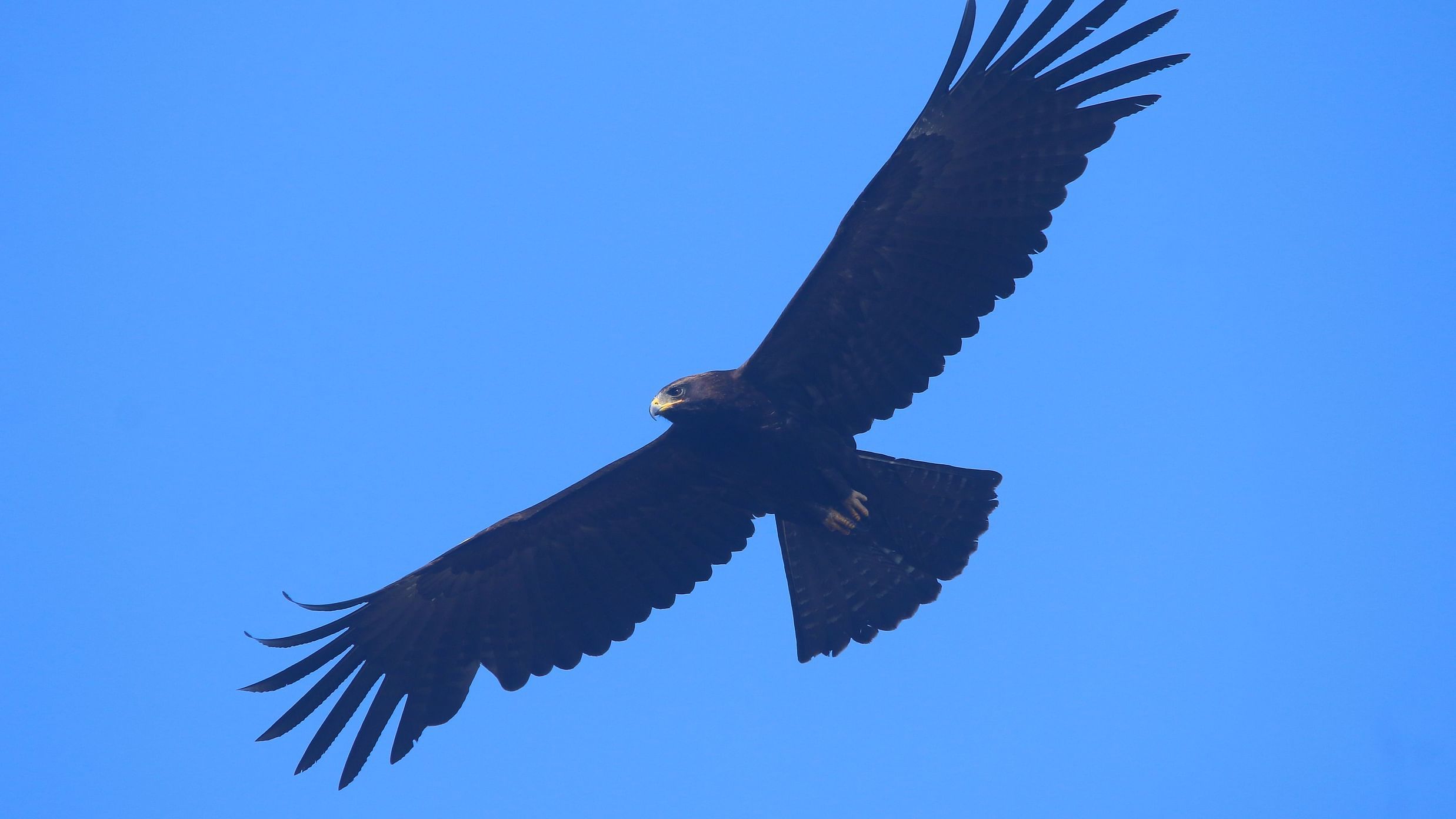
Black Eagle

